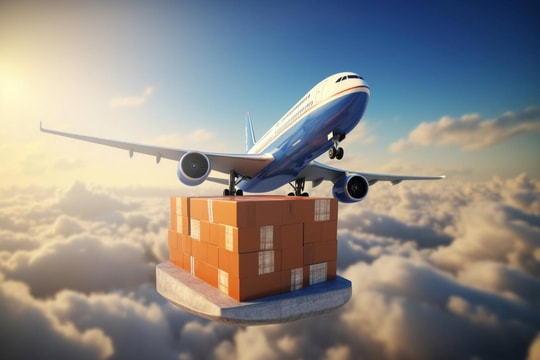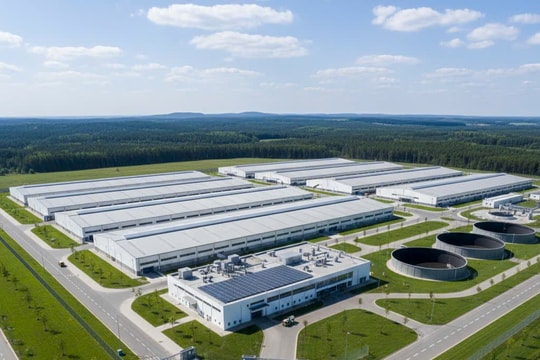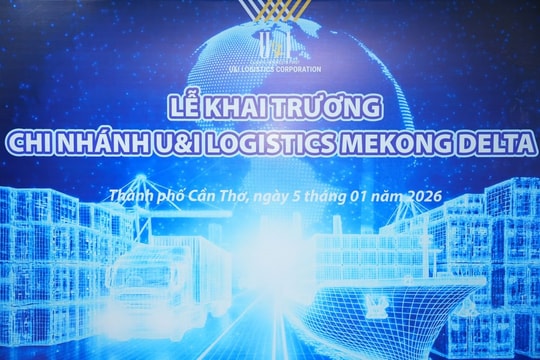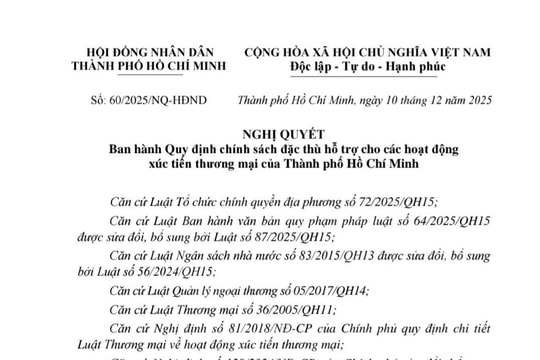VIETNAM'S POSITION IN THE REGION
Vietnam boasts a strategic geographical location in Southeast Asia, with a coastline stretching over 3,260 km and proximity to key international shipping routes. These advantages provide ideal conditions for developing seaports and logistics hubs connecting the region with global markets. Currently, Vietnam has 320 ports, with major facilities like Cat Lai and Cai Mep-Thi Vai playing significant roles in international cargo transport. According to the Vietnam Logistics Business Association (VLA), the sector grows at an annual rate of 14-16%, contributing about 4-5% of GDP.
Additionally, Vietnam benefits significantly from modern free trade agreements (FTAs) such as the EVFTA, CPTPP, and RCEP. These agreements boost international trade flows and increase demand for logistics services. However, despite this progress, Vietnam’s 2023 Logistics Performance Index (LPI) still lags behind Singapore, Thailand, and Malaysia, highlighting both its potential and challenges.

COMPARISON WITH REGIONAL COMPETITORS
Singapore – A Global Logistics Icon
Singapore leads the logistics industry with its advanced infrastructure, efficient international connectivity, and favorable business environment. With the largest port in the region and Changi Airport excelling in cargo handling, Singapore is a global transshipment hub. The government heavily invests in automation technologies at ports and uses artificial intelligence to manage supply chains, reducing costs and processing times.
Thailand – Growth Driven by Infrastructure Focus
Thailand leverages its proximity to major economies like China, Malaysia, and Myanmar to become a regional logistics hub. The government’s "Eastern Economic Corridor" (EEC) initiative aims to upgrade port infrastructure, railways, and logistics warehouses. Enhanced inter-regional transportation projects have significantly lowered Thailand's logistics costs, reducing them from 14% to 12% of GDP over the past five years.
Indonesia – Rapid Development with Challenges
As the most populous country in Southeast Asia, Indonesia has immense logistics potential. The government focuses on digitizing logistics management and adopting technologies such as IoT and blockchain to optimize operations. However, Indonesia’s logistics costs remain high, accounting for around 24% of GDP, due to uneven infrastructure development across its islands.

STRENGTHS AND WEAKNESSES OF VIETNAM
Strengths: Competitive Labor Costs and Strategic Location
Vietnam offers some of the lowest labor costs in the region, a critical advantage for logistics-intensive activities like transportation and warehousing. Its strategic location on the East Asia-Pacific shipping route positions it as a vital transshipment point in the region.
Moreover, Vietnam’s rapidly growing manufacturing sector, with major corporations like Samsung, Foxconn, and LG establishing factories, creates strong demand for domestic and international logistics, particularly for export activities.
Weaknesses: High Logistics Costs and Infrastructure Constraints
Despite natural advantages, Vietnam faces significant challenges. Logistics costs account for 16-17% of GDP, higher than the regional average. The transportation and port infrastructure lacks synchronization, with many critical routes overburdened, slowing delivery times and increasing costs.
Additionally, the logistics sector suffers from a shortage of high-quality human resources. Many logistics companies have yet to adopt advanced technologies, resulting in low operational efficiency and limited competitiveness against regional peers.

COMPETITIVE STRATEGIES
Investing in Modern Technology
Digital transformation is essential for improving logistics efficiency. Vietnam needs substantial investments in automation, AI, and big data analytics to optimize operations. Technologies like blockchain can enhance supply chain transparency and minimize transportation errors.
Some leading Vietnamese companies have begun adopting modern technological solutions. For instance, Giao Hang Nhanh uses GPS systems and data analytics to optimize delivery routes, while Scommerce deploys robots for goods handling.
Developing Human Resources
One major challenge in Vietnam’s logistics sector is the lack of skilled workers. Expanding specialized training programs and fostering partnerships between universities and businesses can enhance workforce capabilities. Investment in courses on supply chain management, modern logistics techniques, and technology applications is crucial.
Improving Infrastructure
Vietnam must accelerate infrastructure upgrades, including highways, seaports, and warehouse systems. Key projects such as the North-South Expressway, Cai Mep-Thi Vai International Port, and Long Thanh Airport must be completed on schedule to improve regional connectivity.
Furthermore, policies to reduce logistics costs, such as tax incentives for logistics businesses and customs reform, should be implemented to boost operational efficiency.

CONCLUSION
Vietnam’s logistics sector is poised for significant growth but faces considerable challenges from regional competitors in ASEAN. To achieve a breakthrough, Vietnam needs a comprehensive strategy focusing on infrastructure improvements, technology adoption, and high-quality workforce development.
Collaboration between the government and enterprises will be critical in creating a favorable environment for the logistics sector. By leveraging existing advantages, Vietnam has the potential to emerge as a key logistics hub in the region, contributing to economic growth and enhancing its global standing.




.jpg)
.jpg)
.jpg)
.jpg)
.png)
.png)
.png)


.png)
.png)






.png)

